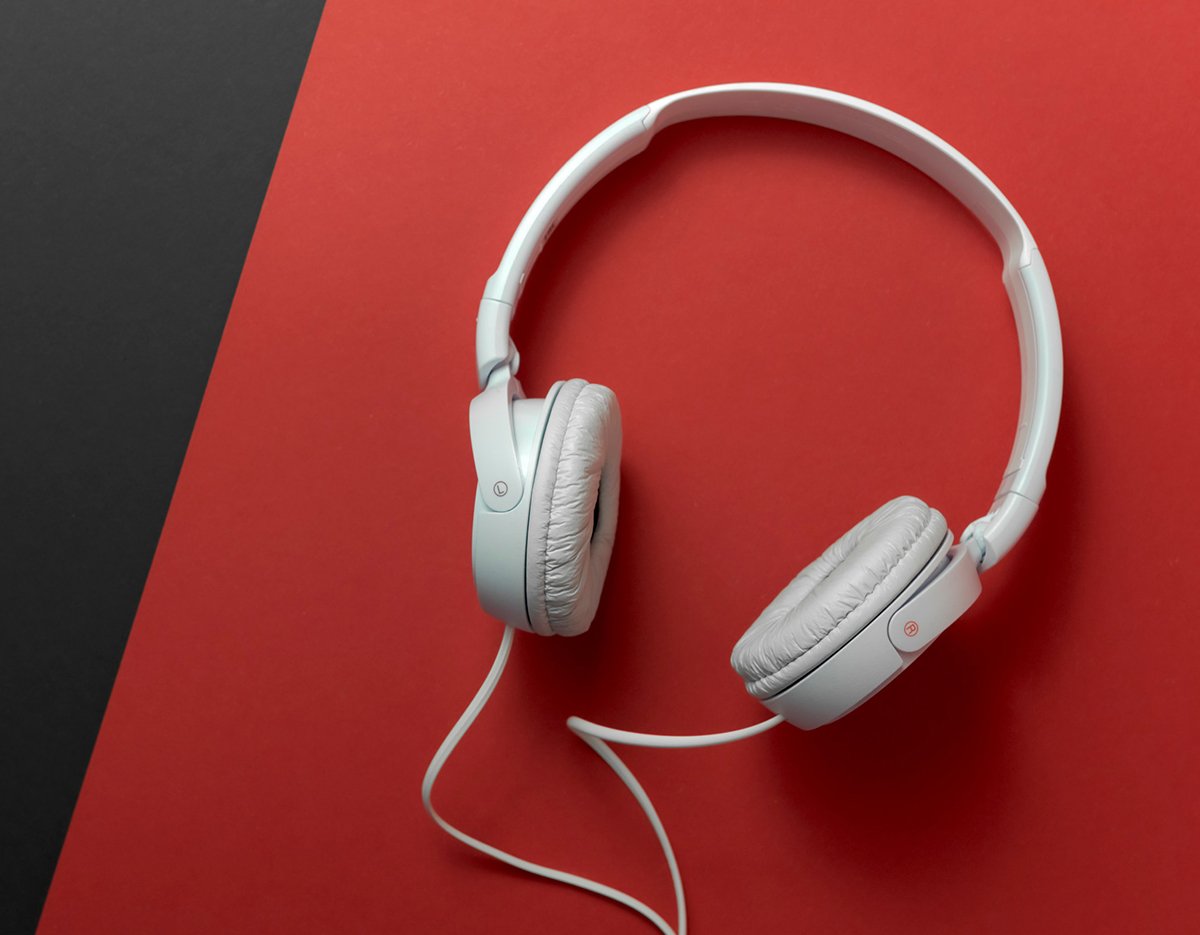Most headphones are labeled left and right. However, does that mean you can’t switch the left and right? And why do headphones have right and left channels?
Headphones have a left and right so you can hear sounds as they were engineered to be heard. Audio placement is deliberate in movies, video games, and music, and channel variation can give you a more immersive sound experience.
So, let’s discuss why the left and right audio channels are separate on most headphones. I’ll tell you why the sides matter and talk more about how left-right channel separation can make almost anything sound better. I’ll also teach you how to determine if your headphones have channel variation.
Page Contents
Why Do Headphones Have a Left and Right Channel?
Headphones have a left and right channel so that your listening experience resembles live sound. Binaural hearing allows us to tell where sounds are coming from, and when we have two channels, that audio becomes more dynamic.
Binaural hearing is the use of both ears to map sound in place. Through binaural or spatial hearing, we can:
- Isolate soft noises, distant sounds, or speech.
- Differentiate a single voice from background noises.
- Determine the direction where the noise comes from.
Spatial hearing gives us clues to how many sound sources and objects are in an environment. It also offers us hints to where a sound is located. Our binaural hearing even helps us recognize the sizes and characteristics of rooms and enclosed spaces.

The Importance of Sound Design
We could reverse left and right without good sound design and never notice the difference. Sounds of identical frequency and strength originating in front of us often lose their spatial or binaural quality.
If headphones split a signal, and the identical sounds arrived at the same time, we would hear the same sounds in both ears, and most of the spatial quality of stereo sound would disappear.
Sound engineers use this knowledge and manipulate sounds’ timing, volume, and frequency. Engineers can do this in the recording process through the placement and types of microphones, placement of instruments and objects, and so forth.
Recording engineers use microphones with polar patterns like Cardioid, Omnidirectional, and Figure-8 that match the recording space. In addition, they’ll experiment with the placement of microphones in techniques like A/B, X/Y, or Mid/Side Recording.
Finally, some sounds are recorded in mono with a single microphone. These usually include Snare and Kickdrums, Bass, and Lead Vocals.
After recording, designers may manipulate sound during the editing process. Some of the changes they might make to an audio track include:
- Timing adjustments. It takes at most 0.6 milliseconds for sound coming from one side of our head to travel to the other ear. Therefore, designers can adjust a recording so that sound from one channel arrives a few microseconds later.
- Volume adjustments. They can make minute adjustments in volume. For example, an object coming from our right is quieter in our left ear.
- Frequency adjustments. Changes in frequency also affect our spatial hearing. For example, since higher frequencies have less energy, a high-frequency sound from the right will be quieter on your left.
Since the purpose of recording music is to mimic the live listening experience, sound engineers mix the sounds to one or the other channel (Left or Right) so that your ears hear different bits and you come closer to a “live” listening experience.
Do Right or Left Headphone Sides Matter?
Left or right headphone sides matter more in certain situations. For example, music audiophiles, gamers, and movie buffs expect the sounds coming from the earphones to mimic what they would hear from a live recording.
There are also times when left and right don’t matter. However, let us focus first on when it does.
Why Left or Right Matters in Music
Right or left matters in music because sound engineers mix music to mimic the location of instruments on the stage or the studio, and audiophiles and careful listeners can often tell the difference.
For example, listeners might expect drums on the left, rhythm guitar on the right, and so on. However, when the sound doesn’t match the location of the instruments, the balance is thrown off, and the listening experience is less than ideal.
Careful classical music listeners can hear the differences due to the standardized location of musicians on the stage. For example, the violins sit to the conductor’s left, so a careful listener wants to hear the violins on the left, not the right.
Why Do Gamers Need To Put Earphones on Correctly?
Gamers must use earphones correctly because it makes the audio more lifelike. Sound engineers sometimes use the term stereo imaging when talking about the placement of sounds. Gamers rely on this imaging because of how it impacts their play.
For example, stereo imaging allows players to hear where a sound comes from within the game. A player who reverses the headphones will perceive gunfire from the right while the enemy shoots from the left.
In most video games, audio has been engineered to let the player respond to the surroundings accurately. So, if you misuse your headphones, you defeat the sound engineer. More importantly, your avatar will get shot, and you’ll lose the game.
Does Right or Left Matter When Watching TV?
Right or left matters when watching TV or a movie with headphones. You might notice that some of the sounds don’t correspond to the action’s direction if you mix up the sides.
For example, in an automobile chase, the car may skid to the right, but you’ll hear the skid move to the left.
Sound designers work tirelessly to ensure that sounds in a movie come from the correct place. For example, if the squealing tires from a chase scene are added later (and they often are), the sound designer makes sure the squeal is on a channel that matches the car’s location in the video.
So if you reverse your earphones, you’re undoing the sound designer’s work. If that happens, you should flip your headphones.

When Does Right or Left Not Matter?
Left or right doesn’t matter if the output source is in mono. It’s also not as crucial in voice calls. In addition, inexpensive headphones don’t reproduce sound well enough that a listener can hear the difference.
If your ear doesn’t need to determine where the sound is coming from and the sound’s source doesn’t simulate spatial hearing, you should be able to switch left and right and not hear a difference.
You can find a tool that’ll let you check whether a sound is coming from the correct channel on your headphones at Audio Check.
Place the headphones on and try the left, right, and center test files. Both cheap and expensive speakers will correctly identify left and right channels.
Then, put the left headphone on your right ear, and the sound will be a little off. The same won’t be true for cheap speakers—left and right will sound the same.
Another way you can test for mono or stereo on your phone is to play the YouTube video “Que Escuchas.” This video lets you quickly test for mono or stereo. While playing it, if you hear “Mi llamo es Pepe,” your phone is mono, but if you hear “Mi llamo es María del Carmen,” you have a stereo phone.
If you hear “Mi llamo es Pepe” from your phone but “Mi llamo es María del Carmen” when you plug headphones in, you have experienced psychoacoustic or sound perception differences. You have a phone that plays sound in mono but sends a stereo signal to your speakers.
Here’s a YouTube video to know more about the sound perception differences:
https://www.youtube.com/watch?v=ksauFHBkCQs&t=25s
How Do Wireless Headphones Work?
Wireless headphones work because they contain built-in receivers that capture the audio signal intended to drive headphones. This signal is also known as the carrier wave. Transmitters convert the signal into the carrier wave and send it to the headphone’s receiver.

The receiver captures the signal, decodes it, and turns it into an analog signal sent to the headphone’s speakers.
From there, the signal reaches what’s known as a driver unit. There are three types of units, but most headphones use a dynamic driver. The active driver unit consists of three major components: two magnets, electromagnetic coils, and a diaphragm.
One magnet is permanent and doesn’t move, but the other, an electromagnet, does. This movement is responsible for the sound you hear.
The electrical signal from the transmitter moves to the electromagnet, which rapidly switches its polarity. This change in polarity causes the permanent magnet to vibrate.
These electromagnets are connected to a thin membrane known as a diaphragm that vibrates them. The diaphragm’s vibrations cause the air to move, creating the sounds we hear.
Because frequencies vibrate at varying rates, the electromagnet must vibrate faster to produce high tones and slower to create low tones.
Also, adjusting the volume affects the power of the vibrations. More powerful vibrations lead to a louder sound, and when you lower the volume, the vibrations weaken.
Why Don’t Wireless Headphones Interfere With One Another?
Wireless headphones don’t interfere because they transmit data at numerous frequencies. These frequencies change rapidly, and even if the signals cross, it’s so quick that most listeners won’t notice it.
For example, Bluetooth speakers transmit data at 79 different frequencies ranging from 2.400 to 2.485 GHz. This frequency changes up to 1600 times per second to avoid any interference.
Two transmitters will rarely operate simultaneously on the same frequency. Furthermore, even if two nearby devices share the same frequency, the listener will rarely hear it since they will share that frequency for only a fraction of a second.
Do All Headphones Have a Right and Left Channel?
Most headphones have a right and left channel, and you can tell whether your headphones are mono or stereo by examining the headphone plug. The key is in the number of plastic rings on the pin.
The rings on the plug play a critical part in sending audio signals to your headphones. These rings, made of plastic (or another non-conductive material), split the plug into several conductive sections, known as pins, that carry separate signals to the left and right earbud.
Each plug must have a minimum of two pins (and hence at least one ring to divide them). One pin transports the signal, and the other is the ground and can also cancel out distortion or interference by giving it a path to travel.

Reasons Headphones Won’t Work
The technical issues our headphones don’t work vary depending on the brand and type of headphones. However, there are numerous specific reasons why headphones don’t work that apply to nearly all types of headphones.
For example, a damaged headphone cable or poor Bluetooth connectivity can cause performance issues. The following are potential fixes to try when you can’t hear anything from them:
- Turn the headphones off and on. This tried-and-true tech technique works with buggy PCs and headphones that don’t work. If your headphones aren’t working correctly, try turning them off and on again after plugging them in to see if that solves the problem.
- Check power requirements. Some headphones have a USB port for connecting to a device. However, if that USB connection is necessary to power the headphones and receive audio, their performance may suffer when attached to an unplugged laptop or a low-wattage device.
- Pair the headphones again. Disconnect your headphones and then re-connect them with your device or computer. Sometimes a new pairing between headphones and the machine can resolve connectivity issues.
- Check the output. You might have paired your headphones correctly, but if your device sends the signal to another source, your headphones will remain silent.
- Disconnect the wired connection. A physical contact point might prevent audio streaming from your device to the headphones. If you charge your headphones with your computer or laptop, unplug them and see if that fixes the problem.
- Check for updates. Many headphones need firmware updates to solve bugs and operate correctly. Download and install these updates through the app or the manufacturer’s website. Also, check that the computer or device’s operating system is updated. Installing the most recent operating system update can eliminate connectivity problems.
- Restart. Turn off and restart your computer or other devices when all else fails.
Headphones can also fail to work because the wires are damaged, you haven’t charged the batteries, or you need to clean them. Also, sometimes the problem is that you forgot to turn them on. It happens to all of us.
Bottom Line
If you use cheap headphones, you might not hear a difference if you put them on backward. However, if your headphones are of higher quality and you are playing a game, watching a movie, or listening to music, you will have a more enjoyable listening experience if you put the speakers on correctly.

